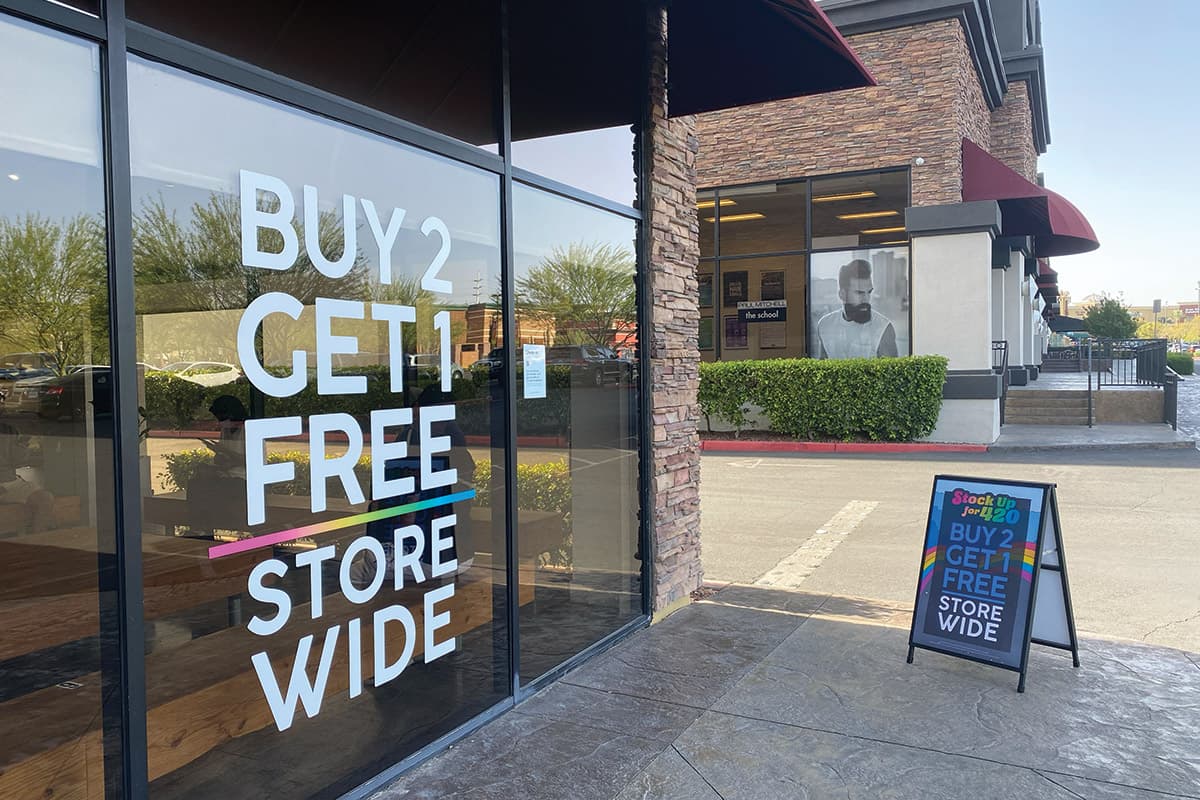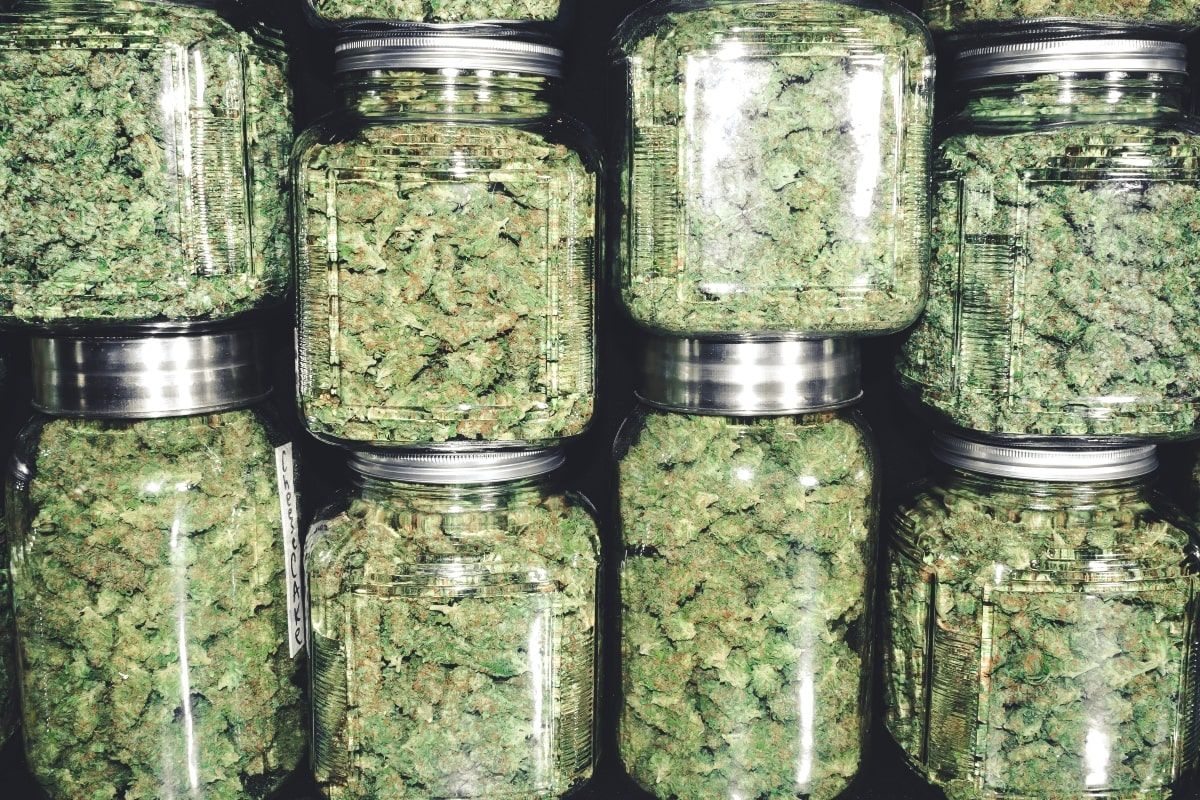(This story appears in the August issue of MJBizMagazine.)
Retail cannabis pricing isn’t a “set-it-and-forget-it” exercise.
“A pricing strategy must be agile because nobody has a crystal ball,” said Leandra Reid, co-founder of Toronto-based cannabis retail consultancy Vetrina Group. “We can’t know what the customer is willing to pay for a product until we put the product in and do some trials.”
Reid outlined three tactics—promotions, discounts and markdowns—that provide retailers with agility to modify the perceived value of
their goods.
Boost traffic, basket size
The purpose of a promotion is to keep customers coming back “and to keep things fresh,” Reid said. “When you think about a promotion, it’s something exciting, it’s adding value.”
Promotions can be planned around events such as 4/20 celebrations and store anniversaries, or they can touch on a seasonal theme.
“An easy way to start is looking at your calendar and seeing what holidays are available,” Reid said.
She added that promotions can also be based around a new-product launch or an in-store brand activation with a supplier’s sales representative.
Promotions don’t need to rely on price cuts. Instead, they could involve product bundling to add value—for example, bundling certain products in a visual merchandising display.
Like markdowns, Reid said promotions can also be used to level out a retailer’s inventory, such as offering a two-for-one special.
“If you have extra product or something and it’s not selling through, if we can bundle it with a product that is selling, or we can display it through visual merchandising so that it looks like it’s a pair of products, then we can level the inventory that way through a promotion.”
Promotions are important for driving store traffic, said Jeff Yapp, CEO of Chalice Brands, which operates seven Chalice Farms marijuana retail outlets in and around Portland, Oregon, and recently acquired five more stores.
“We actually do a lot of lifestyle associations,” he said. “We give people recipes, we give people situational usage (ideas)—that’s an element of promotion. But at the same time, it has nothing to do with price.”
Yapp said cannabis brands help fund most Chalice Farms promotions, covering up to 50% of the cost of promotional pricing.
On top of driving traffic, promotions are also useful for boosting basket sizes and getting customers to spend more, according to Candice Beten, director of merchandise planning and allocation at The Source, which operates four dispensaries in Nevada.
“At the end of the day, those two pieces are what drives your top-line sales,” she said.
Beten said The Source analyzes its promotions to see how they perform across different stores.
“Did we have the inventory to maximize the promotion? How is the margin? Did it hurt or erode other product categories? Because sometimes, when you offer a strong promotion, the customer gravitates to that promotion instead of something else—so it almost trades them down,” she said.
Customer retention
In contrast to promotions or markdowns, discounts take place at the cash register and may involve discretion on the part of store management, Toronto retail consultant Reid said.
She gave the example of a customer who buys a bong that has been on display, meaning the box has already been opened and the bong is no longer brand new.
“We might decide to discount that product when the customer is in the store, because they’re buying the display item instead of a boxed and sealed item.”
Discounts might be applied to cannabis products that are no longer fresh. They can also be offered to preferred customer groups such as seniors, veterans or students, if allowed by local regulations.
Reid said discounts of 10%, 15% or even 20% are the norm. Higher discounts might be offered only to the most preferred customers.
“We don’t want to liquidate the product and not get the profit margin off of it,” she said. “It’s really to support customer experience and say, ‘Hey, you’re special, and because you’re special, we’re going to provide you with a token of our appreciation.’”
In Nevada, The Source offers a 10% discount to medical marijuana patients, military veterans and seniors. Beten said those discounts are worth the cost because they help retain customers.
“Getting these customers to come back consistently, I don’t think anything can take that place,” she said. “We want to make sure that we’re taking care of them. At the end of the day, 10% is not a big impact to our margin.”
The Source store managers also have the discretion to offer discounts to atone for errors in customer service or problems with a product, although Beten said that’s rare.
“The customer is the most important piece of our business, and we want to make things right. So, if there’s ever a situation where the customer is unhappy with a product or a service, we absolutely will do what we need to do to correct it.”
Chalice Brands’ Yapp said at-the-register discounts might sometimes be constrained by local cannabis retail regulations, but within those regulations, “we want to do everything we can to make something right by a customer, and our stores are empowered to do that.”
“When there’s an issue, you should probably overreact to that issue,” he said. “When you fix a problem for someone, they will tell 10 friends. … If you don’t fix that problem, they will tell 100 friends.”
Markdowns help free up cash
Unlike discounts or promotions, Vetrina Group’s Reid said markdowns aren’t about improving customer experience.
Markdowns are “specifically to manage your inventory, to manage your cash flow,” she said. Underperforming inventory can be marked down aggressively to get it out the door, freeing up cash to purchase new products.
“When product is sitting there, it’s depreciating,” Reid said. “And you can’t sell it at regular price because it’s not worth regular price anymore.”
Rectifying purchasing mistakes with markdowns can be a significant hit to a store’s profit margin, but Reid said retailers can plan for that by allocating a certain proportion of revenue on their profit and loss statement to allow for markdowns.
“Accidents and purchasing errors happen,” she said. “There has to be a remedy in place for those, and that’s what markdowns achieve.”
On the other hand, Chalice Brands’ Yapp suggested that promotions can take the place of markdowns. It’s better to focus on improving inventory selection or finding other ways to reduce the risk of uncertain product choices.
“What you’re trying to do as a leader of a business is to continue to improve your ability to pick winners and avoid mistakes,” he said. “If you say, ‘I’m going to budget for mistakes,’ what that says is, ‘My mistake rate’s going to stay the same.’
“So we set a target that says, ‘We’re going to continue to improve how we buy,’ or ‘We’re going to continue to evaluate opportunities to share the risk,’” he continued.
“For example, if a partner comes to us and says, ‘Hey, I’ve got this new product,’ and we’re not sure about it, but they want us to take a position on it … the understanding is that (if) it doesn’t work, (the partner is) going to either pick it up, or (they’re) going to take care of it.”
At The Source, Beten said markdowns can sometimes be avoided entirely.
“Thankfully, we don’t have to mark too much stuff down,” she said. “Because usually we can move through inventory, either on a promo or it just sells at regular price.”
Beten said The Source focuses on fast inventory turnover, keeping three to five weeks of supply on hand. Sometimes, she said, promotions can take the place of markdowns.
“A lot of times, we’ll put something on promo before we take it to markdowns and see what that does. And usually that solves our inventory issue,” she said.
Promotions, discounts and markdowns are best used in concert with each other, retail consultant Reid suggested.
“Inventory is one of the biggest assets that you’ll have, or the biggest asset that you’ll have as a retailer in cannabis,” she said. “I think that using all the strategies is really important.”





